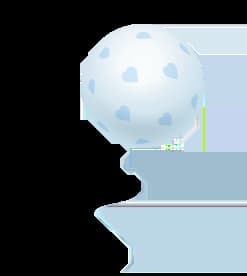Stretch marks happen when your body grows faster than your skin can keep up with. This causes the elastic fibers just under the surface of the skin to break, resulting in stretch marks. Stretching of the dermis beyond its capacity causes stretch marks, generally red or violet in the beginning, later fading to lighter shades. Belly and breasts, two areas that grow the most are most prone to stretch marks .Stretch marks can also show up on the thighs, buttocks, and upper arms. Stretch marks once present are permanent. So rather than trying to remove them, it’s best to avoid getting them in the first place. About 90% of women will get them sometime after their sixth or seventh month of pregnancy, according to the American Academy of Dermatology. They start appearing between 13TH to 21ST weeks. Some people are more likely to develop stretch marks. Risk factors include:
- being a female
- being pregnant
- having a family history of stretch marks
- being overweight
- gaining or losing weight quickly
- using corticosteroids
- having breast augmentation
- having certain genetic disorders, such as Cushing’s syndromeor Marfan syndrome
- darker-skinned women are less likely to have stretch marks than those who are fair-skinned (plus they're not as visible on dark skin).
 In order to know how to prevent stretch marks, it is important to know what causes it. Factors finding association with stretch marks include:
In order to know how to prevent stretch marks, it is important to know what causes it. Factors finding association with stretch marks include:
- Genetic predisposition
- Dehydrated skin (alters the elasticity of skin)
- Accumulation of dead skin cells
- Rapid alteration in weight (sudden weight loss or gain - rapid alteration of the stress on skin)
- Cortisone levels - Some experts believe that hormones during pregnancy may make you more prone to stretch marks. The hormones may bring more water into the skin, relaxing it and making it easier to tear when stretched. This idea is up for some debate.
Thus in addition to genetics and hormones, a person’s lifestyle plays a very important role in maintaining the healthy state of the skin and hence preventing stretch marks by maintaining its elasticity (dermis ). There is no sure-shot or absolute way to prevent stretch marks. If you have a genetic pre-disposition, you might get stretch marks in spite of all the efforts. Yet there is no harm in taking some efforts to prevent them. Probably the intensity might decrease.
- Drink plenty of water and fluids to keep your skin hydrated. Avoid caffeinated beverages as these work like diuretics to dehydrate you.
- Use an exfoliating towel to remove the dead skin cells from the abdomen to allow the new skin cell to regenerate
- Gain pregnancy weight at a steady pace (1 pound per week in second and third trimester - 25 to 30 pounds during entire pregnancy of 40 weeks) and in line with the recommendation. Only 300 to 500 extra calories are needed for your developing baby. Hence plan your diet not to consume excess calories.
- Exercise regularly to stay healthy and remain active, keep your weight gain under scrutiny to avoid excess and rapid gain.

- Moisturize your skin - Shea butter from karite tree nut or cocoa butter from coco beans are good emollients to keep skin moist and hydrated. They stimulate the skin renewal process and keep your skin irritation better.
- Apply some body oil to lock the moisture. Body butter with vitamin E as well as eczema creams can be added to prevent the itching from skin stretching.
- Foods rich in MUFA and saturated fatty acids like coconut oil, butter, olive oil improve the skin elasticity by increasing the collagen and elastin fibres. Eating is better than applying over skin because penetration of these oils through the skin is minimal.
- Fish oil rich in omega 3 fatty acids also help maintain skin healthy.
- Gelatin-rich foods contain good amount of amino acid glycine that is required for collagen, also are helpful.

- Zinc is an essential trace element required for collagen formation. It is an important nutrient for skin health. It helps reduce inflammation and plays a role in the wound healing process. There is very little evidence to date of a connection between zinc and stretch marks, but including zinc-rich foods in your diet, such as nuts, fish, grains, legumes, egg, etc. may help keep your skin healthy.
- Gels made with a mix of onion extract and hyaluronic acidmay help.
- Substances like antioxidants, vitamin C, A, D, E reduce the free radicles in the body and hence the skin damage.
- Vitamin C is directly related to collagen synthesis, important for skin elasticity. Hence incorporate food rich in these substances in your diet.
- Studies found a correlation between low levels of vitamin D and the incidence of stretch marks. More research is needed, but results suggest that maintaining healthy levels of vitamin D may reduce your risk of stretch marks. Hence soak up some vitamin D
One way to make sure you’re getting a variety of nutrients is to choose unprocessed foods in various colors. For example, a breakfast of eggs, whole wheat toast, and mixed berries adds many colors to your plate while packing in a variety of nutrients. The best time to treat stretch marks is while they are appearing and while they're still in that reddish stage. Many creams, oils, and other personal care items claim to help prevent stretch marks, but many of these claims lack scientific backing. They may not help, but in most cases they aren’t likely to hurt, either. Some treatment options that can be used post pregnancy include:
- Retinoid, which your dermatologist can prescribe. It speeds up cell turnover and can stimulate new collagengrowth, leading to plumper, healthier skin. (You can’t use a retinoid if you’re pregnant or breastfeeding, though.)
- Lasers that heat the skin. That boosts collagengrowth and shrinks dilated blood It may take a number of sessions to see results. Lasers aren’t safe during pregnancy.
- Gentler processes such as dermabrasioncan also help renew the skin
- Glycolic acid: Glycolic acid creams and chemical peels are other treatments for stretch marks. They work to help lessen the appearance of current stretch marks, but they do not keep new ones from forming.
In a nut- shell, keeping your weight in check, staying hydrated, eating a healthy diet, and seeking treatment soon after the marks appear may help.




















